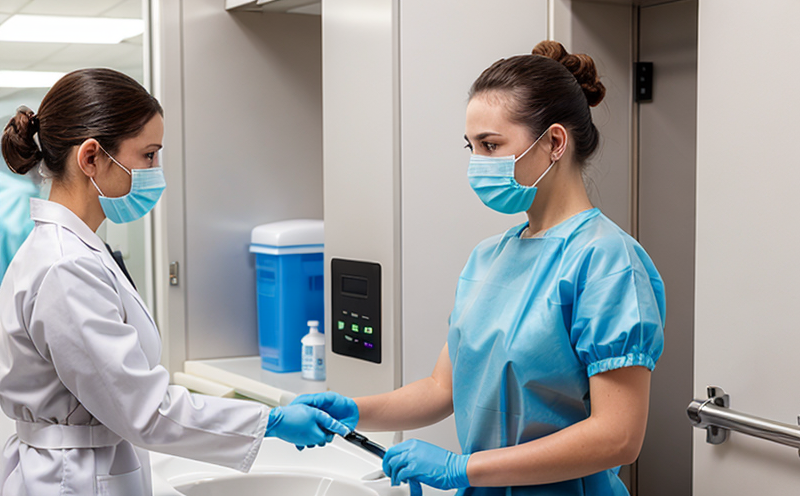UNI EN 14683 Medical mask antimicrobial barrier testing
The UNI EN 14683 standard is a crucial benchmark in assessing the performance of medical masks, particularly focusing on their ability to provide an effective protective barrier against microorganisms. This test evaluates the antimicrobial properties of materials used in medical face masks to ensure they can withstand microbial challenges without compromising the integrity or functionality of the mask.
Medical masks are designed not only for protecting the wearer but also for safeguarding others from potential contamination. The UNI EN 14683:2019 standard specifically addresses the antimicrobial barrier properties, which are vital in preventing the spread of infectious agents during healthcare procedures and interactions with patients.
The test procedure involves exposing a sample of medical mask material to a standardized suspension of microorganisms (such as Staphylococcus aureus or Escherichia coli) under controlled conditions. After exposure, the samples are further tested for any changes in their ability to block the passage of these organisms. The standard defines pass/fail criteria based on the percentage reduction in microbial transmission through the mask material.
This rigorous testing ensures that medical masks meet stringent hygiene standards and can be relied upon in critical healthcare settings. Compliance with this UNI EN 14683 standard is essential for manufacturers, quality managers, and compliance officers to ensure product safety and efficacy.
Test Parameters
- Microbial suspension type: Staphylococcus aureus or Escherichia coli
- Exposure time: 2 hours
- Sample size: 10 cm²
Specimen Preparation
The specimen preparation process is critical to ensure accurate and consistent results. Samples are cut from the mask material, ensuring that they represent a fair cross-section of the intended area. The samples are then sterilized using validated methods before being exposed to the microbial challenge.
Instrumentation & Reporting
The testing apparatus includes specialized chambers designed to contain and expose the sample material to the standardized microorganisms. After exposure, the specimens undergo further analysis to determine the reduction in bacterial count. Compliance with ISO 18174-2 is essential for accurate results.
Reporting involves detailed documentation of the test conditions, including exposure time, microbial type, and reduction rates. The report must include the percentage reduction in transmission through the mask material, which serves as a critical metric for assessing antimicrobial barrier performance.
Applied Standards
The UNI EN 14683:2019 standard is widely recognized and implemented across Europe, ensuring consistency and reliability in medical mask testing. This standard aligns with international standards such as ISO 18174-2 for respirator face masks.
Industry Applications
| Application Area | Description |
|---|---|
| Hospital Settings | Evaluating mask performance in preventing cross-infections among patients and staff. |
| Assuring the safety of healthcare workers during home visits. | |
| Pharmaceutical Manufacturing | Maintaining hygiene standards in production facilities to prevent contamination. |
Environmental and Sustainability Contributions
- Reduces the risk of microbial spread, contributing to public health.
- Promotes safer working environments for healthcare professionals and patients.





